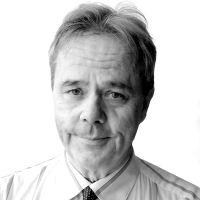As he wrestled with his theory of relativity, Albert Einstein could not have imagined that the confirmation of his life’s work had been vibrating ever closer through the fabric of space and time for more than 1.2 billion years.
What Einstein had understood from the start was that he would not achieve his goal of describing the essential structure of the cosmos with just conscious thought and the delineations of logic.
He instead relied upon intuition and what he described as “the architecture of music.” He would grab his violin or plunk down at the piano when he seemed stuck.
“Whenever he felt that he had come to the end of the road or into a difficult situation in his work, he would take refuge in music,” his older son, Hans, would recount. “That would usually resolve all his difficulties.”
Einstein declared that a great scientist had to be an artist before all else. He sought and found inspiration in the work of Mozart above that of all others.
“Mozart’s music is so pure that it seemed to have been ever-present in the universe, waiting to be discovered by the master,” Einstein once said.
Einstein later described Mozart’s work as “a reflection of the inner beauty of the universe itself,” adding, “like all great beauty, his music was pure simplicity.”
The biographer Walter Isaacson would quote an Einstein friend describing the great thinker as playing his violin in the kitchen late into the night. The music would suddenly stop.
“I’ve got it!” Einstein would exclaim.
He did not so much envision as intuit, feel a cosmos where space and time were a vibrant whole, expanding and shrinking, animated by gravitational waves generated by the motion of matter.
The most powerful waves he contemplated were those that would be generated by one star orbiting another. But even those waves would not be powerful enough over great distances to be measured and thereby confirmed. He himself is said to have sometimes doubted his conjectures.
In 1952, the Juilliard String Quartet gave Einstein a private concert at his Princeton, New Jersey home. The man who could intuit across vast reaches of space and time was now 72 and as subject as anybody else to aging as calibrated by the human life span. He initially declined when the quartet asked him to join them, explaining that a decline in manual dexterity had led him to give away his violin.
The quartet had a spare and asked Einstein what he wanted to play. Einstein agreed and chose a Mozart quintet.
“Dr. Einstein hardly referred to the notes on the musical score,” the first violinist, Robert Mann, would later say, as reported by The New York Times. “While his out-of-practice hands were fragile, his coordination, sense of pitch, and concentration were awesome.”
Einstein died three years later, his theory still unproven. Those who felt about him much the way he had felt about Mozart included Joseph Weber, a physicist at the University of Maryland. Weber set to making a device that he hoped would prove able to detect gravitational waves.
In 1969, Weber announced that he had succeeded. But other scientists were unable to reproduce his results and decided that what Weber had declared to be confirmation of Einstein’s theory was in fact just background noise. Weber was still passionately defending his work when he died in 2002.
Others had begun their own efforts, notably Rainer Weiss of MIT. He conducted a study of the sources of such background noises. His research then turned to ways to dampen them.
Weiss teamed up with two Caltech scientists, Kip Torne and Ronald Drever. The physicists were somehow able to convince the government to invest many, many millions of dollars constructing two Laser Interferometer Gravitational-Wave Observatories (LIGOs), one in Louisiana, the other in Washington state.
Construction began in 1994 and the LIGOs were operational in 2001. Long years of refining and waiting ensued. Tension among some participants prompted one wag to suggest that Caltech should put “Prozac in the water coolers.”
Thorne became the best known of the team, acting as a consultant for the time-travel movie “Interstellar.” Drever is said to have been the most creative and if he acquired a reputation for being difficult, it was in the way of Mozart.
“It’s going to happen sometime,” he was quoted saying of the effort. “One mustn’t die before then.”
In another cruelty of the human lifespan, Drever is said to have developed dementia and to have been consigned to an extended care facility in Scotland. He was cheated out of being able to join the excitement when the automatic sensors of the LIGOs picked up a particular signal early on the morning of Sept. 14 of last year.
Just three days before, the scientist had considered shutting down the LIGOs to make some adjustments. They then decided to maintain the vigil uninterrupted. Had they not, they all would have missed by three days something that had been on the way for 1.3 billion years.
The researchers spent the next four months confirming that the signal was indeed what they hoped. They deduced that two black holes had circled each other and then united, generating a more massive gravitational wave than Einstein ever imagined.
On and on and on, the wave had rippled through the fabric of space and time, approaching ever closer as Mozart composed his music and Einstein composed his theories.
When the wave finally reached Earth, it was still strong enough to ever so slightly, but oh so unmistakably, alter mass and time just as Einstein figured. And the LIGOs were able to make an audio recording that established what Mozart had already proven; the cosmos are more fully heard than seen; sound tells you more than sight; the listener, not the beholder, is supreme.
The confirmation that time is indeed relative brings hope that time travel might eventually become more than just the stuff of movies. You can fantasize visiting Mozart and Einstein as well as Weber and, of course, poor Drever at his sharpest.
Imagine how thrilled they would all be to learn that the confirmation of Einstein’s theory as inspired by Mozart had arrived here as a note in middle C.






